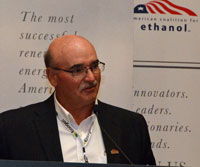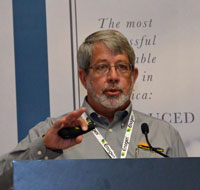The Hawaii Department of Budget and Finance is now authorized to issue special purpose revenue bonds not exceeding $50,000,000 for the purpose of planning, permitting, designing, construction, equipping, and operating BioTork Hawaii LLC’s commercial facilities. Recently, the state passed legislation to assist in funding a zero waste project that converts crops, crop residues, dedicated energy crops and ag waste into sustainable biofuels and co-products.
According to BioTork, their bioconversion development efforts in Hawaii date back to 2010 when it began research of its technology. The company uses a “proprietary evolutionary optimization approach,” and “enhances the performance of non-GMO microorganisms under real-world industrial conditions in an unrivaled cost efficient way”. The conversion process takes a few days to cycle in a heterotrophic environment, meaning no sunlight is needed, to create oil for biofuel and high-protein feed.
 “The passage of this legislation greatly enhances BioTork’s efforts in Hawaii. It demonstrates the attractiveness and the potential of our technology, which is focused on the bioconversion of agricultural waste, into a higher value product,” said Eudes de Crecy, CEO of BioTork.
“The passage of this legislation greatly enhances BioTork’s efforts in Hawaii. It demonstrates the attractiveness and the potential of our technology, which is focused on the bioconversion of agricultural waste, into a higher value product,” said Eudes de Crecy, CEO of BioTork.
Basing its efforts on the requirements of the “Hawaii Zero Waste Program,” BioTork entered into collaboration with the Daniel K. Inouye Pacific Basin Agricultural Research Center. Since that time Hawaii committed $4,800,000 in research, development and capital improvement funding through a contract with DKI-PBARC to focus on BioTork’s evolution technology. Some of these funds have been committed through the state’s barrel tax allocations, which target energy and food security initiatives. Other funds have been appropriated through legislative capital improvement program allocations.
“At BioTork we firmly believe that in many circumstances there is much more value in converting carbon rich organic biomass into high value products, than just burning it, burying it or using it as fertilizer in the field. The model we pursue is to breed the good microbe candidates to specifically address the locally available biomass sources, using natural methods and to create much more value to the local and global economy,” added Tom Lyons, CSO of BioTork.
With the additional support of special purpose revenue bond funding, BioTork Hawaii LLC will be able to fuel the third step of its development program. This would involve scaling up to build and operate commercial facilities that will have the capacity to convert agricultural crops and by-products such as albizia, sweet potatoes, papaya, sugarcane bagasse, glycerol and molasses to biofuels and high-protein feed.



 “It’s an honor for Boeing to work with South African Airways on a pioneering project to make sustainable jet fuel from an energy-rich tobacco plant,” said J. Miguel Santos, managing director for Africa, Boeing International. “South Africa is leading efforts to commercialize a valuable new source of biofuel that can further reduce aviation’s environmental footprint and advance the region’s economy.”
“It’s an honor for Boeing to work with South African Airways on a pioneering project to make sustainable jet fuel from an energy-rich tobacco plant,” said J. Miguel Santos, managing director for Africa, Boeing International. “South Africa is leading efforts to commercialize a valuable new source of biofuel that can further reduce aviation’s environmental footprint and advance the region’s economy.”







